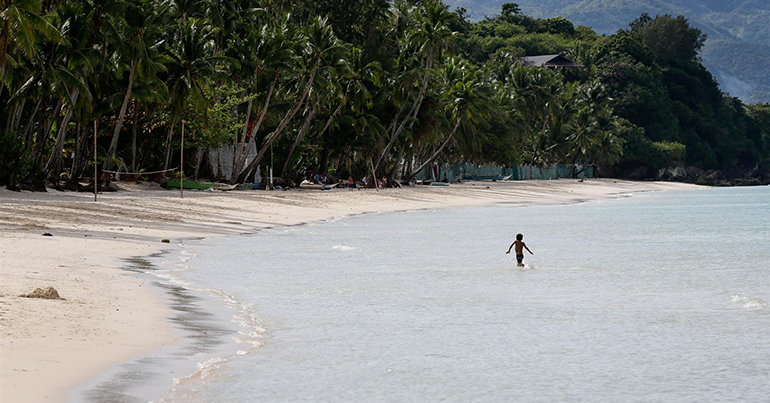What are your thoughts on the Boracay Island closure?
Boracay mirrors the current state of the marine ecosystem and environment in the Philippines – it is degrading. [The] majority of the country’s fishing grounds are overfished, and marine ecosystems are facing crises due to pollution and other man-made disasters. I think it is high time that we re-frame and correct how tourism functions to address poverty and protect the environment, and we have that opportunity today.
What are the main environmental issues affecting Boracay Island, and who is to blame for them?
High presence of fecal coliform because of the lack of septage treatment plants, regular harmful algal blooms, deterioration of marine ecosystems such as corals, water pollution due to violation of the Clean Water Act and the Solid Waste Management law, construction on wetlands and unregulated tourism.
These are just some of the few environmental issues in Boracay that accumulated in a span of more than three decades. Failure to implement the Philippine environmental law both by the national government and mainly by the local government unit of the province of Aklan, coupled with the greed of the businesses to short-cut permitting processes has led Boracay to where it is now; a cesspool.
It should be recalled that Boracay is a place of conflict between developers and the indigenous communities forcibly taken out of their land to give way to the construction of tourism facilities.

Is a six-month closure enough time for the island to be restored?
For us, the six-month closure is not enough to allow Boracay to recover, rehabilitate, and be restored, but it is a good start and should have clear objectives, within the time frame, laid down to identify elements for recovery such as: ecosystems assessment, re-evaluation and redevelopment of the comprehensive land use plan, marine resource evaluation, sustainable tourism plan, treatment of indigenous lands and equitability.
The closure will affect many businesses. What do the owners think of the decision?
Based on reports, the community is divided and it’s not surprising. But an overwhelming position coming from the business community is of their agreement that the rehabilitation should happen and proceed in order to start [on] the right footing for Boracay, along the framework of sustainable and equitable development, and tourism.
Is it possible to find a balance between tourism and environmental protection on Boracay?
Boracay reflects the current state of many tourism destinations in the Philippines: unregulated and unsustainable. But there are areas of hope in the Philippines where the managers of tourism destinations are doing it correctly: carrying capacity is established, priority benefits are given to communities and ecosystems are protected. Tourism and environmental protection are complementary and should not be taken in isolation from each other.
Duterte has admitted that he does not have a master plan for how to fix the island’s problems in the six months. In your opinion, what steps should be taken?
I think that a master plan should emanate from a thorough socio-economic and environmental evaluation. It should be based on the results of the investigation that will happen during the closure, that way it’s going to be more accurate and apt.
I think it’s important that a master plan comes from [a] variety of inputs coming from different local stakeholders and experts. We should have learned by now that the reason why Boracay, and any other tourism destination for that matter, [is] in such a depressing state is mainly because of local and national politicians who lack the will to implement the law because of [the] voters’ backlash.
One idea that has been suggested is to declare portions of the island as “critical habitat”. Could this idea work and would businesses support it?
Boracay is an important island with important critical habitats, I think it is important that these be reaffirmed and be enforced. There are [already] existing models globally and in the Philippines, where activities and structures are built around. Again, tourism plays an important role in protecting the environment, and it is high time that we harness that potential.


